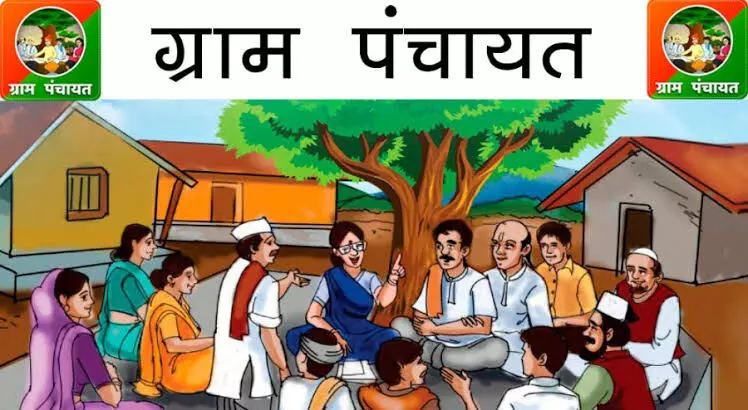Whither the Power of the Panchayats?

When the 73rd Constitutional Amendment Act was presented in Parliament, the then Minister for Rural Development, G. Venkat Swamy, stated that it “lays a duty on both the Centre and the States to establish and foster village panchayats so that they can become effective, self-governing institutions.” This declaration, at the time, signalled a historic moment for democratic decentralisation. Yet, more than three decades on, this supposed self-governing institution appears to be miles away from achieving its original objective. The question that looms is: why has the Panchayati Raj system, once hailed as the soul of rural India and the foundation of democracy, remained confined to being merely an administrative structure, and failed to truly become a self-governing entity?
A self-governing institution, by definition, is one that functions independently with clearly defined roles, adequate financial resources, and capable human power. This necessitates genuine empowerment and implementation by the states in accordance with constitutional expectations. However, ground realities and various studies unequivocally demonstrate that Panchayats continue to be accorded only a minimal role, which can, at best, be described as a ‘constitutional facade’. This is corroborated by a 2024 study conducted by the Ministry of Panchayati Raj, Government of India, which developed a ‘Decentralisation Index’ to measure the actual autonomy granted to Panchayats.
This study was entrusted to the Indian Institute of Public Administration, New Delhi, titled: “Status of Devolution of Powers to Panchayats in States – An Indicator Based Ranking.” The report assessed the status of Panchayats based on six key dimensions: Legal Framework (D1), Functions (D2), Finance (D3), Personnel (D4), Capacity Building (D5), and Accountability (D6). These dimensions were combined to arrive at an overall index (D). Each dimension was weighted based on its role in strengthening Panchayats, with ‘Finance’ receiving the highest weightage of 30%, while ‘Framework’ was given a mere 10%. The remaining dimensions were each accorded a 15% weightage.
The report categorised all states into three groups: General Category States, North-Eastern/Hilly States, and Union Territories. This categorisation took into account geographical, administrative, and structural diversities to ensure a more realistic comparative assessment.
Now, the fundamental question is: when the vision of self-governance is explicitly clear in the constitutional amendment act, where did the चूक (failure) occur in translating it into reality? The answer lies embedded in the implementation process. The 73rd Amendment provides for two types of provisions: compulsory and enabling. The compulsory provisions related to the ‘Framework’, such as the three-tier Panchayat system, regular elections, and reservation, have been adhered to by almost all states, as these were legal obligations. However, the enabling provisions – such as the transfer of functions, financial powers, appointment of personnel, training, and accountability mechanisms – have remained subject to the discretion of state governments, and most states have not taken them seriously.
Essentially, the powers devolved to Panchayats are either nominal or limited. In many states, Panchayats have functions assigned, but neither the funds nor the necessary personnel to implement them. Numerous Gram Panchayats see a single secretary serving multiple Panchayats, impacting the quality of administrative work. The situation regarding financial powers is such that even the allocated funds are often released with delays, hindering the execution of schemes.
Capacity building is another significant issue. Panchayat representatives receive neither adequate training nor are they equipped with an understanding of the technical aspects of governance. Consequently, they remain dependent either on the bureaucracy or on external consultants. This erodes the self-reliance of local administration.
The state of accountability of Panchayats is also concerning. Regular Gram Sabha meetings have become a mere formality, and efforts towards transparency remain limited to token gestures. Where Panchayats were once called the laboratories of democracy, there is still a significant lack of transparent accounting and public participation.
Undoubtedly, some states are performing better in this regard. States like Kerala, Karnataka, and Maharashtra have devolved substantial powers and resources to Panchayats, leading to comparatively more effective local governance there. But these are exceptions, not the rule. In most states, decentralisation has remained confined to political rhetoric.
The solution to the problem is clear: Panchayats cannot be empowered merely by enacting constitutional amendments or laws. It requires genuine political will, administrative reforms, financial autonomy, and a strengthened grassroots training system. Simultaneously, clear parameters for accountability and transparency must be developed so that Panchayats can become self-governing not just in name, but in their functioning as well.
As long as village-level governments operate only on paper, the decentralisation of democracy will remain incomplete. There is now a need to view Panchayati Raj as a real transfer of power, not merely a means to share administrative burden. Because until the Indian village is empowered, the democratic soul of India will remain unfulfilled.
